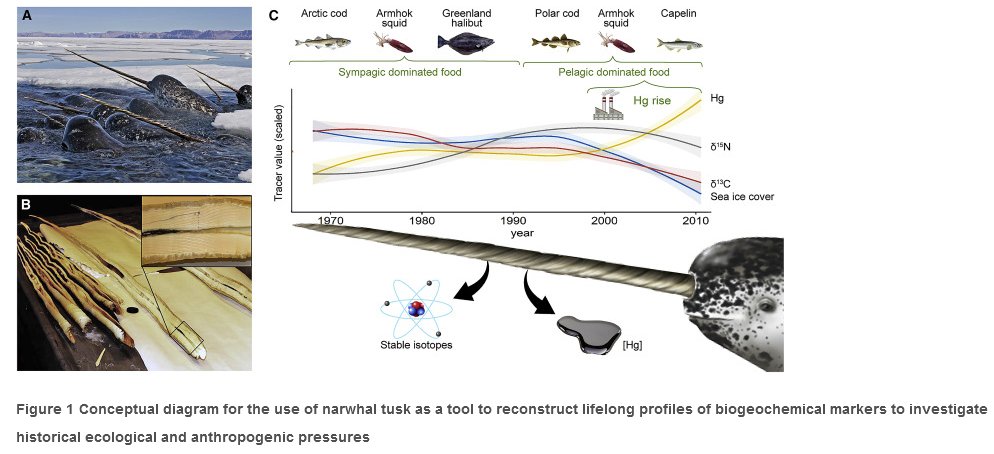Analysis of narwhal tusks reveals lifelong feeding ecology and mercury exposure
New publication by Rune Dietz, Jean-Pierre Desforges, Frank F. Rigét et al.

Abstract:
The ability of animals to respond to changes in their environment is critical to their persistence. In the Arctic, climate change and mercury exposure are two of the most important environmental threats for top predators. Rapid warming is causing precipitous sea-ice loss, with consequences on the distribution, composition, and dietary ecology of speciesand, thus, exposure to food-borne mercury. Current understanding of global change and pollution impacts on Arctic wildlife relies on single-time-point individual data representing a snapshot in time. These data often lack comprehensive temporal resolution and overlook the cumulative lifelong nature of stressors as well as individual variation. To overcome these challenges, we explore the unique capacity of narwhal tusks to characterize chronological lifetime biogeochemical profiles, allowing for investigations of climate-induced dietary changes and contaminant trends. Using temporal patterns of stable isotopes (δ13C and δ15N) and mercury concentrations in annually deposited dentine growth layer groups in 10 tusks from Northwest Greenland (1962–2010), we show surprising plasticity in narwhal feeding ecology likely resulting from climate-induced changes in sea-ice cover, biological communities, and narwhal migration. Dietary changes consequently impacted mercury exposure primarily through trophic magnification effects. Mercury increased log-linearly over the study period, albeit with an unexpected rise in recent years, likely caused by increased emissions and/or greater bioavailability in a warmer, ice-free Arctic. Our findings are consistent with an emerging pattern in the Arctic of reduced sea-ice leading to changes in the migration, habitat use, food web, and contaminant exposure in Arctic top predators.
